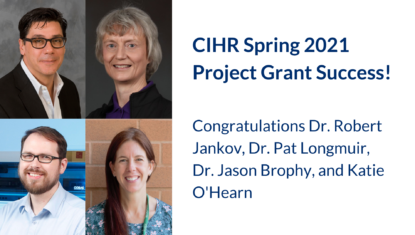Dr. Robert Jankov joined the Department of Paediatrics in May 2017 as aClinician-Scientist in the Division of Neonatology and Senior Scientist in the Molecular Biomedicine Program at CHEO RI. He was recruited from the University of Toronto, where he was first appointed in 2003.
Robert received his medical degree from the University of Melbourne, Australia and trained in Paediatrics at the Royal Children’sHospital in Melbourne. He moved to Canada in 1996 to undertake a Clinical Fellowship in Neonatal-Perinatal Medicine at SickKids, Toronto, which was followed by a PhD in the Department of Physiology at the University of Toronto. The overarching goal of Dr.Jankov’s research is to improve survival and mitigate the long-term disability associated with chronic lung injury and associated pulmonary hypertension secondary to premature birth. Current foci of interest include the pathogenetic roles of up-regulated thrombospondin, Rho-kinase and ceramide signaling.
Robert also leads the CFI-funded Advanced Microscopy and Stereology Facility at CHEO RI. This newly operational facility enables the most advanced stereological methods necessary to precisely evaluate lung (and other organ) structure and injury both in preclinical models and in human tissues. Dr. Jankov has been the recipient of a number of training, support and infrastructure awards over his career, including a Career Development Award from theCanadian Child Health Clinician Scientist Program (2004-2008) and a CIHR NewInvestigator Award (2008-2013). He is currently funded by operating grants from the CIHR and the Heart and Stroke Foundation of Canada.
Related News
Research Projects
-
Suspension-Induced Stem Cell Transition: A Non-Transgenic Method to Generate Adult Stem Cells from Mouse and Human Somatic Cells
23/10/2022
Our initial observations revealed that when fibroblasts are cultivated in suspension culture, they undergo a notable transformation in morphology and concurrently exhibit the expression of stem cell-associated markers. However, this intriguing phenomenon is transient, as these cells subsequently enter a phase of rapid apoptosis (anoikis or detachment-induced cell death). Therefore, we explored whether or not ASCs could be derived in larger numbers from suspensions of somatic cells cultured under non-adherent conditions. We initially studied mouse dermal fibroblasts (tail/ear fibroblasts, TEFs) [10] in novel suspension culture conditions together with newly formulated growth factor (GF)-enriched [11], serum-free culture media with the Rho-kinase inhibitor [12], designed to support the transformation, survival and proliferation of ASCs.
-
Thrombospondin-1 Plays a Major Pathogenic Role in Experimental and Human Bronchopulmonary Dysplasia
15/03/2022
TSP-1 inhibits alveologenesis in neonatal rats, in part via the upregulated activity of TGF-β1. Observations in human lungs suggest a similar pathogenic role for TSP-1 in infants at risk for BPD.
-
Chemical shift of 129Xe dissolved in red blood cells: Application to a rat model of bronchopulmonary dysplasia
01/12/2019
To measure the chemical shift of hyperpolarized 129Xe dissolved in the red blood cells(δRBC) of a cohort of rats exposed to hyperoxia and intermittent hypoxia (IH) to mimic human bronchopulmonary dysplasia, and to investigate the effect of xenon‐blood distribution time on δRBC.
-
Sodium nitrite augments lung S-nitrosylation and reverses chronic hypoxic pulmonary hypertension in juvenile rats
10/10/2018
Chronic PHT heralds a greatly increased risk of death and severe morbidity, and no therapies yet exist that are proven to modify the disease course.


